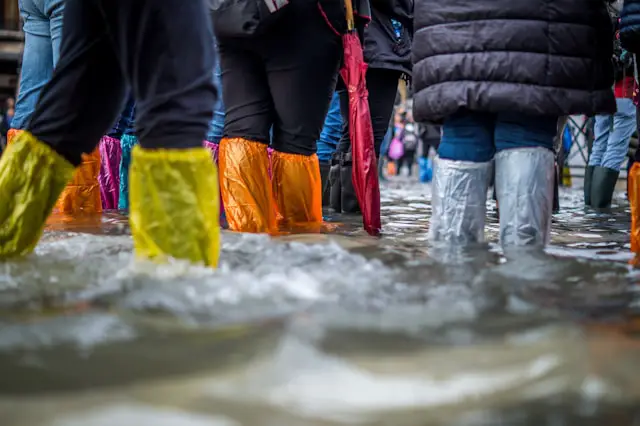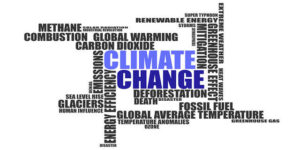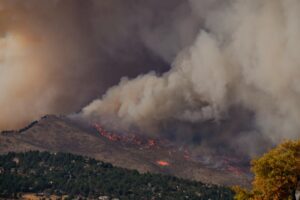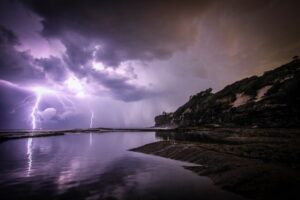Disasters on the Rise: How 2025’s Tornadoes, Floods, and Wildfires are Testing America’s Limits
Disasters on the Rise: If you ask residents in the heartland states impacted by the unprecedented tornado outbreaks of May, or families in flood-drenched neighborhoods along Texas’s rivers, or the weary firefighters battling the latest California inferno—2025 will be remembered as a year the weather turned truly catastrophic.
This year’s disasters have been relentless:
- May 16: A rare and violent tornado outbreak swept across Missouri, Kentucky, Virginia, and the broader central U.S., killing 28 people and destroying over 5,000 homes and businesses in a matter of hours.
- June 11-13: Torrential rains triggered flash floods in San Antonio, Texas, and across West Virginia, claiming at least 18 lives and forcing hundreds of water rescues in the dead of night.
- March–Summer: Wildfire season simply never ended, with more than 130 separate blazes scarring Oklahoma, Kansas, Texas, and vast swathes of California—where major mudslides followed in the charred hillsides around Los Angeles and San Diego.
The costs are staggering, both in human and economic terms. Damage estimates are still being tallied, but 2025 is already on track to be one of the country’s costliest ever for natural disasters. In California alone, the fires have destroyed more than 400 homes and forced thousands to evacuate, with the state’s insurance industry reeling from back-to-back years of losses.
What’s driving this surge?
Two factors: climate change and regulatory gaps.
Federal agencies such as NASA, FEMA, and the National Weather Service (NWS) are quick to point out how rising global temperatures are fueling more intense storms, longer wildfire seasons, and even “rain bombs”—intense periods of flooding rainfall. But as these agencies provide mapping, forecasting, and emergency support, many are also underfunded or facing staff shortages, limiting their ability to help the hardest hit communities.
Tornado Risk Expands
Typically associated with “Tornado Alley” in Oklahoma and Texas, 2025’s outbreaks pushed farther east—impacting densely populated cities with little warning. Local officials faced criticism for outdated or malfunctioning warning sirens, and the underfunded NWS struggled to keep up with the volume and speed of storms. Assessment teams continue the painstaking work of tracking tornado paths, measuring wind damage, and helping communities access federal relief.
Floods: More Frequent, More Severe
Flash flooding along rivers and in urban areas—supercharged by warm, moist air and shrinking natural floodplains—has become a year-round threat. In Texas, 2025’s June floods left neighborhoods under six feet of water, with roadways transformed into rivers. West Virginia’s mountain communities, still rebuilding from previous disasters, found themselves cut off as bridges and roads washed away.
Wildfires: Year-Round, Nationwide
This year’s wildfires have hit not just the West, but Great Plains and Southern states, as grasslands and forests dried to a tinderbox under persistent drought and record heat. The result: dozens of fires burning simultaneously, overwhelming local fire crews and prompting federals to step in. In California, post-fire mudslides rendered recovery more complicated, bulldozing homes and infrastructure that barely survived the flames.
Disproportionate Impact on Vulnerable Communities
The brunt of these disasters is borne by rural and lower-income communities, where infrastructure and resources are stretched thin. Insurance is often inadequate or unavailable. Many families are left with limited options as they try to repair damage while facing rising costs for housing, food, and utilities.
Government and Scientific Response
At the federal level, NASA’s emergency imaging and damage assessment teams have been instrumental, providing detailed satellite maps to guide first responders. FEMA’s disaster declarations have helped speed financial assistance, but many experts warn that as climate risks multiply, recovery funds and planning need to grow dramatically.
Lessons and Calls to Action
2025’s disasters show that America is near the breaking point of its preparedness. Experts stress that:
- Investment in resilient infrastructure—upgrade levees, modernize warning systems, fireproof homes—must be accelerated.
- Land use planning should discourage building in floodplains and fire-prone zones.
- Climate adaptation—such as creating natural green buffers and restoring ecosystems—should be integrated into federal, state, and local emergency planning.
- Finally, addressing the root cause—greenhouse gas emissions—remains urgent, if America is to slow the acceleration of such disasters.
As communities rebuild and mourn their losses, one truth is clear: The new climate reality is here, and adaptation is not optional.







